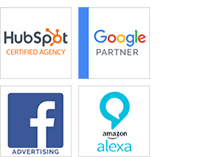
Google Analytics Tips For Marketers
Google Analytics is a popular web analytics tool that you can utilize to analyze and track your website traffic. It is free since its release in November 2005. You can use the tool to strengthen and shape your market strategy as well. You can understand your site better with Google Analytics, improve your SEO ranking and avoid some common mistakes with the following Google Analytics tips.
Top Google Analytics Tips
Understand Your Site Better–Check Engagement Rates
Using Google Analytics, you can measure the number of hours visitors usually spend on your website and understand the type of content that keeps them engaged and captures their attention. However, it is important to bear in mind that the tool will only measure engagement when visitors move from one page to the other.
Understanding and analyzing the engagement levels is important as it allows you to determine whether your content is sufficiently engaging and compelling or it is better to dedicate your effort toward the development of streamlined and more relevant content. This can help you create an effective brand awareness strategy.
Study Your Bounce Rate
The bounce rate is defined as the number of times a visitor lands on a website, but bounces back without navigating the site. This is not necessarily a bad thing; depends on what you want them to accomplish on that page. A variety of different factors can lead to a high bounce rate. Factors such as an unappealing homepage, poor web design, confusing layout and lack of recent posts.
Any of the above factors may cause visitors to switch to another website. You can decrease your website’s bounce rate by making the homepage more attractive or appealing by using the best homepage designs, adding more engaging and topical content in the form of videos that may intrigue your visitors and lure them into checking what you have to offer.
Mistakes to Avoid
In addition to following the Google Analytics tips mentioned here, it is also important to learn about the common mistakes you have to avoid.
Do Not Overlook Behavior Flow
Apart from click-rate KPIs and basic traffic, you can extrapolate valuable insights regarding visitor intent using a tool called behavior flow in Google Analytics. Behavior flow is beneficial as it takes website analysis to the next level by going beyond raw figures to render visual diagrams that may help decipher or understand the intent of your site visitors through the analysis of things like what kind of web pages they interact with and those they tend to disengage and drop off when visiting your site. This is among the most important Google Analytics tips.
Do Not Ignore Sources of Traffic
This is another common mistake that should be avoided. It is important to know where your web traffic is originating from (such as organic versus paid); this can offer detailed insights, which can help your future online marketing plans. It could reveal what ad purchases are driving more traffic to your site, what kind of organic initiatives (like blogs) are yielding better results. It may also indicate whether the dollars and time spent on social media efforts is effective. Therefore, always know what’s driving you web traffic.
Improve Your SEO Ranking
Landing Page Report
We all know the benefits of high SEO rankings. You can use the landing page report to figure out what web pages have ranked well, how many impressions they have received, their overall ranking position and how many clicks they have received. The report will show you the most popular pages with lowest click-through rates and highest impressions. This well help you determine which pages you need to improve.

















